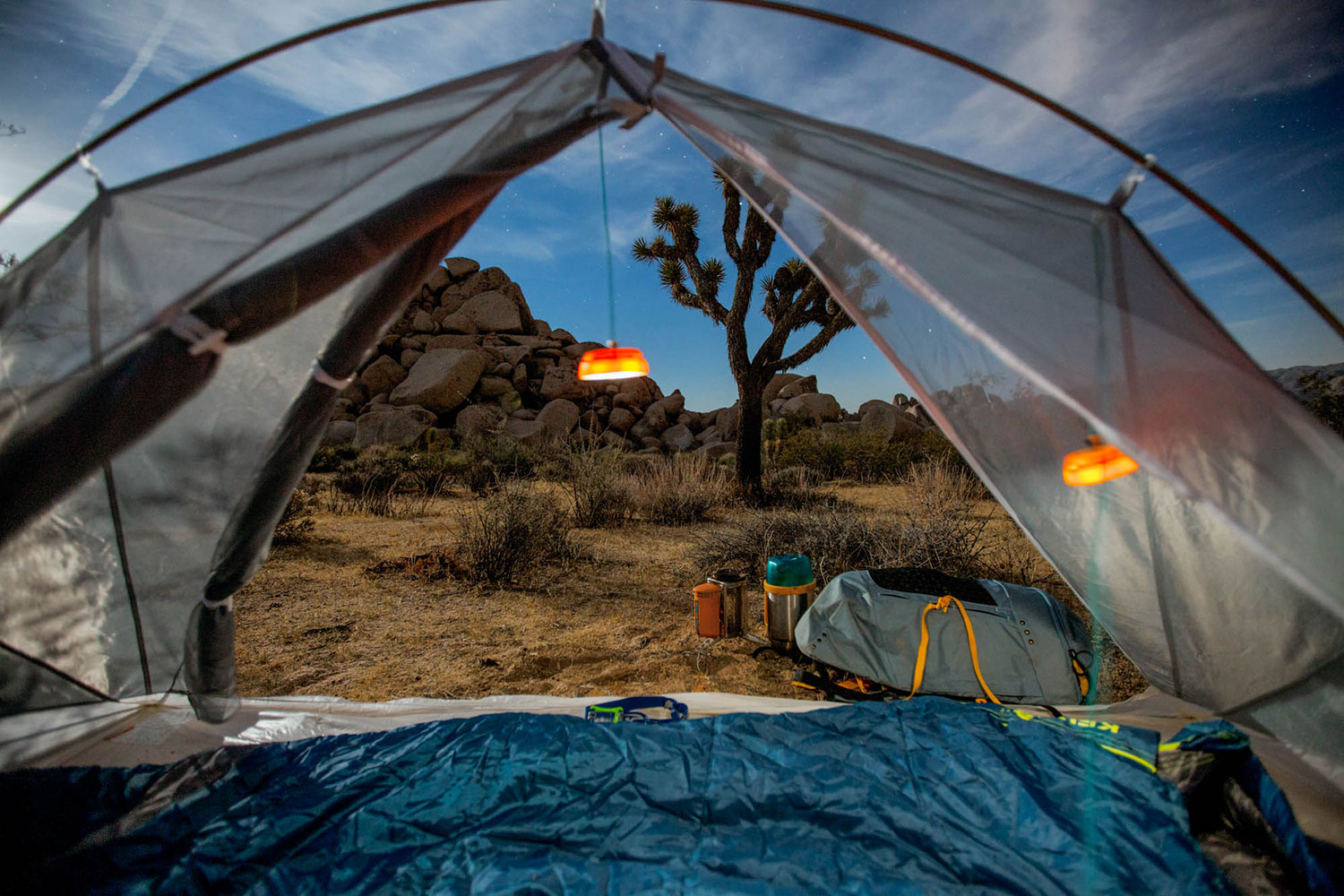How do we define wilderness? Is it simply a place where nature is still dominant, or is it something more than that? There are plenty of places that are easily seen as “natural” but still don’t quite feel like wilderness.
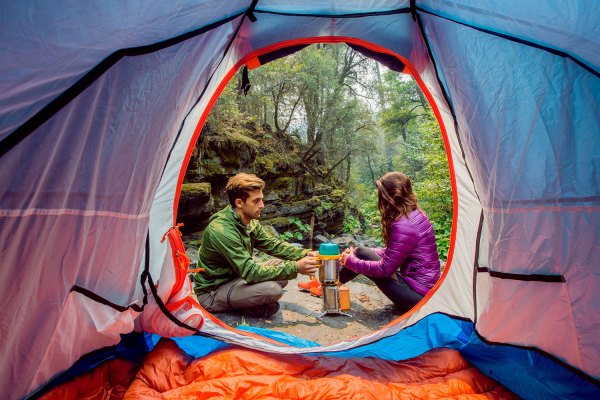
Ben and Bri camping in Northern California, using a BioLite wood burning stove.
Wilderness to me is a place that is truly wild, a place where your cellphone doesn’t work and there’s no quick exit strategy. It is a place where the ancient natural laws preside over the laws of man, and where being ill-prepared can be downright dangerous.
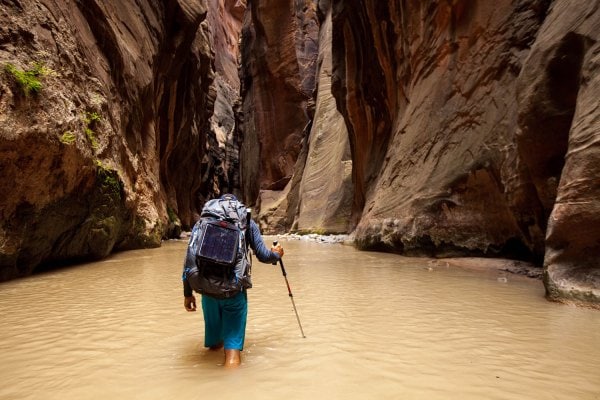
On many adventures the elements are the main obstacle. Hiking the Narrows in Zion National Park means being wet, unstable and cold even in the middle of summer.
Exploring these landscapes can be intimidating. We know that we are completely on our own, cut off from things we often take for granted. In the modern world, we rarely go a day or even an hour truly isolated. Technology either governs or assists us at every stage of the day. From waking in the morning via a digital alarm to flicking off the lights at night, we submit to a massive technological maze that has quietly and completely taken over our lives. Though technology has made our lives in the urban environment more comfortable, withdrawing from that technology is getting harder.
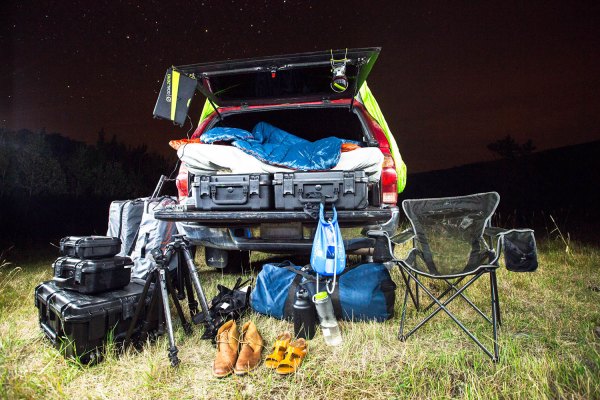
On a photography road trip, gear management is crucial. Every piece of equipment is vital and must be carefully selected when space is limited.
However, the idea that technology is a barrier to the outdoors is wrong. In fact, it has created means for us to explore even farther and stay out even longer.
At one time matches were a technological advance that helped bring us into the wild. Maps and compasses were another leap forward, and GPS has gone even further, showing us the exact path we need to take to get where we want to go.
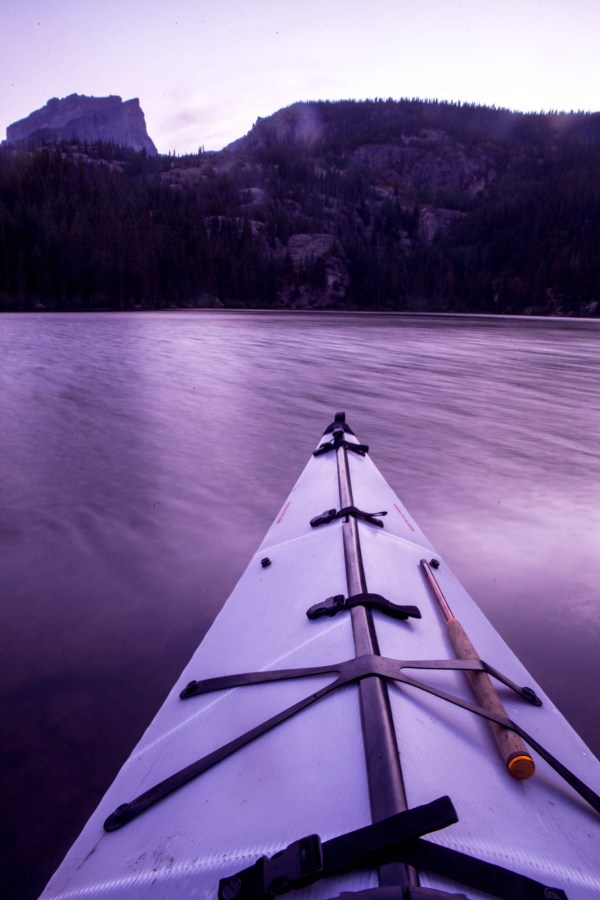
Taking in the view in Rocky Mountain National Park with an Oru Kayak which folds up into a pack.
Until recently not much had really changed when it came to accessing the outdoors, just incremental improvements on design, functionality and materials. Now, though, we are in a stage of technological evolution that has brought huge advances to our ability to access the outdoors, and in truth wilderness is more accessible than ever thanks to these advances. I have kayaks that fold up into a backpack, a stove that can charge my GPS, hydrophobic clothing, and solar panels to charge my camera equipment so that I can bring home images of far-off places.
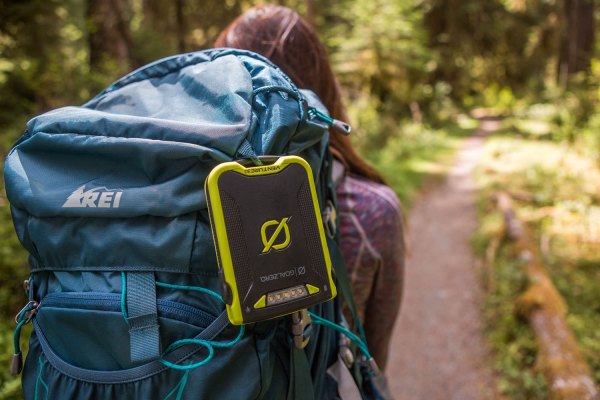
Packing into Olympic National Forest using a Goal Zero charger.
The best of these advances are the ones that we quickly forget about, the ones that simply became part of our existing kit and take up no extra space in our already heavy packs. These things are subtle, and our adventures are improved almost without our awareness.

Ben charging and using his phone while making coffee on a BioLite stove.
I’ve spent months at a time in the wilderness on expeditions, and the most important thing I’ve learned is this: My ability to stay out longer is dependent on my ability to stay comfortable, to keep myself clean, fed and warm at night. When I have those few things taken care of, the desire for home dwindles. It takes a little while to be okay with the lack of connection to the outside world, but once I let myself settle into daily life, and the main goal is to survive, I’ve never been more content. Exploration becomes less of a struggle and more a way of being.
